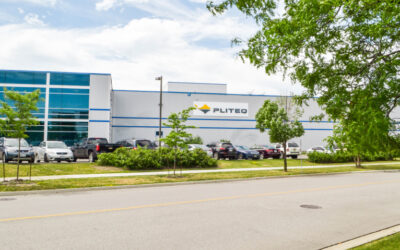Not a day goes by without stories mentioning “Smart,” an acronym for “self-monitoring, analysis, and reporting technology.” The idea was launched by IBM almost 30 years ago. Today, “Smart” has found its way into watches, keys, phones… and cities.
From 4K and Ultra High Definition television to appliances like refrigerators with cameras and built-in sensors, we are at a point when rapid advances in technology are the norm rather than the exception.
Even basic tasks, like grinding coffee beans and boiling water for a pot of our morning brew, are easier through tech – why get out of bed to make an espresso or macchiato when we can use our Smartphones to tell our Wi-Fi coffee makers to do it for us?
As we ride the wave from the Fourth Industrial Revolution to the Fifth, humanity has moved far beyond the mechanization of the Industrial Revolution of about 1760 to 1840, when objects like textiles – painstakingly made by hand – began to roll off machines. In the years to follow, electrification replaced steam and horse power. Much later, in the 1980s, even computers – initially cumbersome behemoths occupying the entirety of a university basement – became smaller and affordable.
This soon ushered in digitization, Artificial Intelligence (AI), Virtual Reality (VR), robotics, and Augmented Reality (AR), where our real flesh-and-blood world is enhanced by computers transforming how we see, smell, hear and touch things around us.
Cities: A natural for “Smart”
While definitions of “Smart cities” vary, the term has come to mean cities incorporating Information and Communication Technologies (ICT) to support objectives such as improving transportation and utilities, reducing energy consumption and waste, and improving the lives of citizens.
According to online resource Technopedia Inc., “Like any smart system, a Smart City is one in which sensor-driven data collection and powerful analytics are used to automate and orchestrate a wide range of services in the interests of better performance, lower costs and lessened environmental impact.”
Worldwide, cities large and small are becoming “smarter” every day thanks to technology, especially the Internet and the spread of 5G.
Smart gets smarter
Representing the fifth generation of cellular network connectivity, 5G is transforming for the better how cities function. Much faster than its 4G predecessor, 5G means emergency vehicles can respond to a crisis or accident faster, and electrical grids operate more efficiently.
Cities are more effectively connected to devices which can warn citizens of natural disasters like floods in advance. And vehicles, especially the latest generation of driverless cars, are ‘connected’ to one another through wireless 5G, reducing the risk of collisions.
Through 5G and the Internet of Things (IoT) – which sees objects equipped with cameras, sensors and software wirelessly communicating with other devices over the Internet – Smart cities are able to monitor energy consumption, create intelligent parking solutions, better adapt speed limits, and address other necessities, like automation of street lights, to improve safety and security while saving electricity.
Although Smart cities may seem like a recent innovation, their roots go back decades to the 1970s – where the emphasis on transforming cities through applying technologies began – instead of having been suddenly and recently transformed by the denizens of those places where all new technology seems to be created, such as California’s Silicon Valley (today home to Apple, Cisco Systems, Facebook, Adobe Systems, and other innovative companies).
The subject of multiple books, studies and reports – like Smart Cities: Digital Solutions for a More Livable Future from the McKinsey Global Institute – many cities worldwide are already entering the next stage in their technological growth.
The next stage
For city planners, 5G and wireless communications let them do more with less, helping locals to improve their quality of life. “Becoming a smart city is not a goal but a means to an end,” says the report.
“The entire point is to respond more effectively and dynamically to the needs and desires of residents. Technology is simply a tool to optimize the infrastructure, resources, and spaces they share. Few cities want to lag, but it is critical not to get caught up in technology for its own sake. Smart cities need to focus on improving outcomes for residents and enlisting their active participation in shaping the places they call home.”
As with much of today’s technology, making cities work more efficiently is about more than just earmarking new investment for devices. For a start, it’s about meticulous attention to ensuring that the devices ‘talk’ to one another, especially important in today’s age of COVID-19.
With all of us having borne the increasing brunt of the pandemic for well over a year, governments, scientists, researchers and businesses have been working feverishly on several developing fronts, from creating vaccines to Smartphone apps.
Using technologies like Bluetooth, these Smartphone apps allow for digital contact tracing, letting us know if we have been in contact with an infected person. Able to pinpoint and map areas where infection is greatest, COVID tracing has also grown to include tracking the virus in wastewater. Although wastewater is not known to transmit COVID-19, the information collected reveals much that allows scientists, and thus city officials, to better understand how the virus spreads in communities.
Planning for the future
Just as repairing, replacing and building roads, bridges and sidewalks is vital to the continued health of every urban area, so is investing in Smart city technologies.
For urban planners, digital transformation serves several purposes. Necessary to meet the needs of residents, businesses, and visitors, making cities smarter also increases efficiencies and reduces waste by saving driving time and eliminating redundant and duplicate services, making urban areas more affordable in the long run. Just as cities need a sound foundation and constantly updated infrastructure – like roads and utilities – to thrive, so should they build on powerful, reliable computer networks, data, and the IoT.
It is no coincidence that thriving cities like Toronto are attracting multinational tech giants such as Cisco Systems, busy creating innovation hubs and installing massive, well-shielded servers in key downtown locations. Without a strong digital backbone, innovation in Smart cities is not possible.
And just as important as reliable Wi-Fi and real-time wireless networks is security. The consequences of uninvited spies – able to unleash coordinated cyberattacks for reasons ranging from terrorism to politics to profit on Smart city systems – can be devastating.
To prevent these attacks, city officials must work in tandem with cybersecurity experts on layers of security, certificate-based authentication, automatic security updates, compartmentalization, and other areas. Most important is, if a security breach is initiated, how many layers of protection exist to protect data?
Building benefits
One of the key objectives of Smart cities is the overall improvement of life.
According to the McKinsey Global Institute, which examined 50 cities worldwide for its Smart Cities study, urban areas of around five million will see many advantages through digitization. This includes a 30 to 40 percent reduction in crime, 20 to 35 percent faster emergency response, 15 to 30 minutes shaved off daily commutes, and water use reduced by 25 to 80 litres per person per day.
Dozens of benefits, covering areas from security to healthcare, improved mobility to optimizing waste collection routes, and greater community engagement and streamlined economic development and housing are possible.
Previously famous for their bureaucracy, Smart city halls will offer quick and efficient digital licensing and permitting for businesses, digital business tax filing and more, saving time, money, and aggravation.
Like any initiative, Smart cities are only as effective as the governments and businesses spearheading digital initiatives. If cities like San Francisco, Seattle, New York City, Beijing, and Shanghai are any sign, the lives of residents will become more efficient, less polluted, and less stressful than in the past, thanks to Smart city initiatives.













